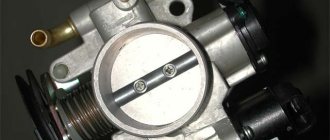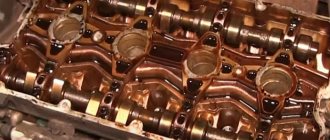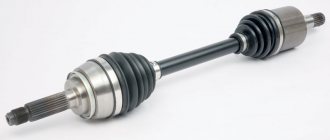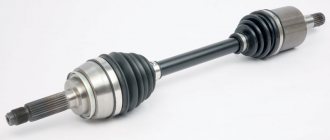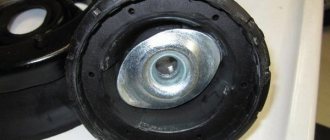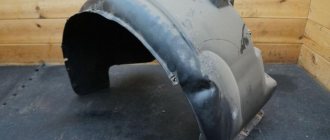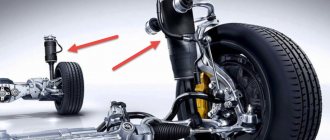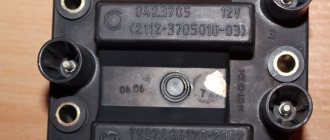An engine breather (breathing valve) is a device for equalizing the pressure in a closed container relative to atmospheric pressure. In other words, the breather valve allows the closed container to communicate with the atmosphere. In internal combustion engines, the breather equalizes the pressure inside the engine crankcase.
During the operation of the vehicle and the operation of the power unit, the pressure in the crankcase may increase, as a result of which crankcase gases escape through the breather, excess engine oil is squeezed out, etc. If the pressure in the engine crankcase is below atmospheric pressure, then outside air enters the crankcase through the breather, thereby eliminating the difference between external atmospheric and internal pressure in the crankcase cavity.
Purpose
What is an engine breather? Before answering this question, it is important to understand what it is intended for. This is directly related to the principle of its operation. The main task of this device is to reduce the pressure in the engine crankcase. When the power unit operates, various gases collect in the crankcase. Gradually they accumulate and create quite a lot of pressure. If you do not bleed them, the engine may stop, the pressure will back up the pistons.
In this case, the gas will seek an exit through any available hole. To prevent this from happening, a breather is installed. This device is also used to ventilate the crankcase. Unnecessary gases are removed from it. Thus, the temperature inside the engine is slightly reduced. The engine breather has two tasks: ventilation and releasing excess pressure. In some cases, the operation of the breather can indicate the presence of problems in the engine. If the rings are stuck or the piston is damaged, gray smoke characteristic of the exhaust will fly out of the hose. This way you can diagnose these faults without disassembling the engine. In normal condition, a slightly noticeable transparent smoke comes out of the breather.
Troubleshooting
The first thing you need to pay attention to is the color of the exhaust, blue or black smoke, a sign of burnt valves or problems with rings. Next, you should check the compression in all cylinders. The value on gasoline internal combustion engines should be within 11-13 MPa. Disconnect the pipes from the valve covers, air intake and breather
Assess the degree of contamination. If the pipes are very dirty or clogged with oil deposits, use gasoline to clean them or a special carburetor cleaner. Check the condition of the oil separator. Unscrew the required bolts to get to this unit. Remove the oil separator and assess its condition. If necessary, clean or rinse followed by drying. Inspect and, if necessary, flush the breather valve. There are situations when the valve gets stuck, resulting in exhaust gases entering the crankcase and creating excess pressure. Remove the part and wash it; in most cases, this will resolve the issue of squeezing oil out of the breather.
Helpful advice! To distinguish stuck rings from a burnt-out valve, it is enough to perform several manipulations. After checking the compression in the cylinders, determine the cylinder with the lowest value. Then inspect the spark plug of this cylinder; if the rings are lodged in this cylinder, the spark plug will be covered with a thick oil layer. If the valve is burnt out, the spark plug will appear normal without any major abnormalities.
Why do you need to clean the valve?
The external conditions created during the operation of the breather valve often lead to the accumulation of dust and dirt in it, which interfere with its normal functioning. Because of this, excess or, conversely, insufficient pressure occurs, leading to oil leakage. If situations arise when oil is thrown through the unit, first of all you should check whether it is clogged. To prevent oil from being thrown out, you need to remove the valve for cleaning or replacement. The breather should be replaced with a new one in cases where it is too contaminated, and before installing a new unit, it is recommended to thoroughly clean the place where it is installed, which will avoid rapid contamination again.
Breathers of other important components of the car also need to be cleaned in a timely manner to prevent car malfunctions. Important The breather is an important element that helps the car operate properly, but to prevent breakdowns it is recommended to clean or change it in a timely manner. A faulty valve can lead to various problems: risk of gearbox leakage; rapid wear of synchronizers and much more. Regular cleaning of the valve will help protect the oil from deterioration in its lubricating and protective properties, and therefore will extend the life of the iron horse for a long time.
Useful tips
As a general rule, you should check all existing breathers on a particular vehicle (engine breather, transmission breather, axle breather, etc.). The fact is that oil particles can be squeezed out through the breather during its operation, which leads to active contamination.
In practice, breathers need to be dismantled and cleaned of dirt and oil residues. If cleaning does not produce results (in the case when oil “presses” out of the gearbox, motor or axle precisely because of a faulty breather), the device must be completely changed.
Also, before cleaning, you need to know how to remove the breather. On many cars, it is enough to remove the rubber cap on top and then clean the valve. Some other models may not have a rubber breather cap, and the breather is located in the 5th gear cover. In this case, cleaning is also carried out using improvised means.
How to clean the breather
Every caring car enthusiast carefully monitors the technical condition of his vehicle and tries to carry out minor repairs and preventive maintenance in a timely manner. For example, it is necessary to clean the breather as it becomes dirty, since it helps remove gases from the engine crankcase. At a car service center, they will ask you a considerable amount for this simple procedure. However, why pay for something you can do yourself?
You will need
- Cotton gloves, wrenches, screwdrivers, wire. polyethylene.
Instructions
1
To begin, select the location where you will perform the cleaning procedure. If the weather is dry, then everything can be done right outside. But it’s still better to find a garage with good lighting. Set the car to the parking brake. Turn off the ignition. Open the hood and find the breather . To do this, you can use the operating manual for your car, which should describe in detail the structure of the engine compartment. Typically, the breather is a small square-shaped box to which two pipes are attached. One of the pipes connects the breather to the monoinjector, the second to the air filter.
2
Remove the upper air filter housing. Don't forget to turn off the power to the on-board power supply system. To do this, remove the negative terminal from the battery. This is necessary in order to avoid short circuits and electric shock. After removing the air filter, you will see the intake manifold, it needs to be removed. Under the intake manifold you will see a breather , which is usually attached to two bolts.
3
Unscrew the two bolts and carefully remove the breather . Remove the cover from it. Underneath it you will see an oil separator, which is secured with a pin. You need to unscrew the small nut on the stud itself, but not all the way, since it is impossible to put it back on without removing the pan. The tube needs to be cleaned. To do this, use a cleaning rod. It can be made from wire of the desired thickness. Examine the breather for cracks or other defects. There is a small brush at the end of the pipe that extinguishes the flame if there is insufficient compression. It also needs to be cleaned.
4
After completing all the procedures, you need to reassemble the breather in the reverse order and check its functionality. To do this, start the engine. Carefully remove the cap that covers the oil filler neck. Cover it tightly with a thin piece of polyethylene and secure with an elastic band just below. Polyethylene should not swell. Otherwise, it indicates the presence of pressure. If there is no pressure, then cleaning the breather was successful. A slight pressure can only be created when the accelerator pedal is pressed.
Preventative work
Some motorists are wondering: why clean the breather? This is done in order to avoid problems with the operation of car components; it is necessary to clean the breather in a timely manner. Such actions will allow you to maintain the permissible pressure level, and as a result, stable and trouble-free operation of the car. It is recommended to carry out cleaning at every technical inspection (MOT), and in some cases even more often. The cleaning process itself looks like this:
- removal of pipes and hose. All pipes and hoses coming from the “breathing valve” are removed; in some models you will also need to remove the air filter housing;
- removing the breather cover;
- cleaning work. Now you can begin cleaning the valve cap and tube.
- installation work. Assembly is carried out in reverse order.
This is how cleaning is done. The procedure is quite simple, and you can do it yourself with your own hands, without the need to visit a service center.
What is it and what is its role
The main task of this breather is to maintain the required pressure in a closed container. While the engine is running, various gases accumulate inside, and if they are not released, the engine will not be able to operate normally. In very simple terms, this is a valve that releases excess air when pressure increases.
Another useful function of this device: lowering the temperature and ventilating the engine.
Important point. In addition to its main functions, the breather is a kind of filter and prevents dust and dirt from entering the engine.
DESIGN FEATURES
Previously, the breather was a regular fitting with a hose attached to it and directed downwards. This design ensured the removal of crankcase gases to the atmosphere. To prevent oil from escaping, an oil separator was installed in front of the breather. This element changed the trajectories of gas movement, while the oil, due to inertia, settled on the walls of the oil separator and flowed into the pan.
Crankcase ventilation system of VAZ 2111: 1. Engine crankcase. 2. Breather. 3. Hose from the breather to the valve cover pipe. 4. Oil separator under the valve cover. 5. A thin hose from the valve cover to the fitting with the throttle body nozzle. 6. Fitting with a jet on the throttle valve block. 7. Thick hose from the valve cover to the inlet pipe.
In modern cars, to improve environmental friendliness, a whole system for removing these gases is used. Thanks to it, they are not released into the atmosphere, but are fed into the cylinders, where they burn.
This system includes:
It is noteworthy that the crankcase gas exhaust system uses several oil separators - labyrinth, centrifugal, and mesh.
The breather is located in various places in the lower part of the engine block. It can be either a separate element or act as a housing for the probe.
The breather is a very simple element in design, but the performance of the engine depends on it. If you turn it off, then within a few minutes the increased pressure will squeeze out the oil. If the oil comes out through the dipstick, then you just need to restore the lubricant level and wipe the engine compartment. But if the oil presses through the crankshaft oil seals, then replacing them is impossible.
There are no moving parts in the breather, so there is nothing to break in it. But it still requires maintenance. The oil separator is not able to catch all the oil and oil particles remain in the gases. Some of them settle on the inner walls of the breather along with soot and pollutants. Gradually, the diameter of the tubes decreases, which impairs crankcase ventilation. In winter, frozen water is added to the dirt on the walls.
On some cars, the crankcase ventilation system provides for the supply of gas to the valve covers, where they additionally pass through an oil trap mesh before entering the cylinders. The honeycombs of this mesh are also clogged with dirt, so the throughput is reduced. This “results” in pushing through the camshaft seals.
Why does crankcase pressure increase?
How long does it take to change the oil in manual and automatic transmissions?
Having noticed oil leaks in the engine compartment and/or a decrease in the oil level in the crankcase, it is necessary to accurately determine that the diesel engine is breathing. This can be done in the following way. It is enough to unscrew the oil filler cap on a warm diesel engine. If you notice bluish smoke coming from the throat, then the problem is obvious.
Cylinder piston group and cylinder head
The main reason that a diesel engine is breathing is the wear of the cylinder-piston group. During the operation of the internal combustion engine, scuffs form on the cylinder walls, the cylinders themselves gradually break and acquire a changed shape of the walls, and the piston rings wear out or break. As a result of heating, the thermal gaps between the piston and the cylinder walls become too large.
In addition to reducing the efficiency of the seal, wear of the rings and their coking are imposed, which deprives the rings of mobility. In such conditions, engine oil enters the combustion chamber abundantly, and the diesel engine emits blue smoke. Also, the gases formed during the combustion of the fuel-air mixture and the engine oil entering the cylinders actively fill the engine crankcase.
If the diesel engine is very worn out, then a major overhaul is necessary, which will mean boring the cylinders, replacing pistons, rings, etc. Accurate diagnosis of CPG problems requires measuring compression to determine the spread of indicators across the cylinders.
In the event that the diesel engine does not breathe much and the malfunction is only at the initial stage (wear of the cylinder walls is within acceptable limits), some auto mechanics resort to the method of decarbonizing the piston rings. This measure is considered temporary, since further long-term operation of the unit after decarbonization of the rings should not be expected. The best solution would be to replace the rings with new ones.
A diesel engine can also vent due to wear of valves, guide bushings, valve seals, etc. Similar to piston malfunctions and ring decarbonization, timing problems can only be effectively eliminated by comprehensive repairs. Replacing valve seals alone does not have a lasting effect.
Engine crankcase ventilation system
Second on the list of main reasons why a diesel engine is breathing is a clogged crankcase ventilation system. The symptoms of a decrease in the throughput of this system resemble wear of the CPG: increased consumption of engine oil, diesel smoking with blue smoke, etc. In some cases, it is possible to normalize engine operation and eliminate excess oil consumption by cleaning the breathers.
Let's sum it up
Taking into account the above information, it becomes clear that even with its apparent simplicity, the breather of a gearbox, engine or axle performs a rather important function. This means that the condition and proper operation of this element must be monitored.
This is especially true for SUVs, trucks and special equipment, where in addition to gearboxes and internal combustion engines, breathers are installed on bridges. Such machines are often operated in harsh conditions, as a result of which the gearbox or axle pressure reduction valve may become dirty or fail more often (especially the rear axle breather).
Also, the unit or assembly itself may stop working normally, which subsequently leads to serious damage. For this reason, it is necessary to clean the breathers installed on different units and elements of the car at every service. If the car was driven off-road, it is recommended that after such trips you immediately wash the breathers to remove dirt and sand.
Transmission oil leakage from the gearbox: manual transmission and automatic transmission. The main reasons why a leak occurs are box repairs.
Why oil leaks from the engine breather: signs and main causes of such a malfunction. How to understand why oil is flowing through the breather, troubleshooting.
Why does engine oil start to drip or leak at the junction of the engine and gearbox. How to accurately determine the cause of a lubricant leak, methods of diagnosis and repair.
Purpose and principle of operation of the breather. Why are breathers installed on internal combustion engines, gearboxes and axles? When it is necessary to clean the breather, useful tips and recommendations.
Causes of oil leaks in the oil filter area: oil flows from under the filter, through the housing, in the area of the fitting, etc. Available diagnostic and repair methods.
How to change the oil in a DSG gearbox: changing the oil in a DSG gearbox. What to consider when replacing, selecting oil for DSG, tips and tricks.
Source
SERVICE
To eliminate the possibility of the seals being pressed through, you need to periodically clean the engine ventilation system. If you remove dirt twice a year, there will be no problems with the work, since the dirt is removed with a rag.
Dirty breather of Skoda Octavia
You should start with the breather itself. In some engines it is secured with bolts, while in others the breather is tightly seated in the seat.
After removing the breather wall, carefully wipe it with a rag. If the contamination is strong, then they are removed with wire or a screwdriver. Before installing the breather, wipe the seat.
We wash and clean the ventilation system pipes with a cleaning rod made of rags and wire.
The oil trap screen installed in the valve cover also needs to be cleaned. If it is slightly dirty, just wiping is enough.
If the mesh is heavily contaminated with deposits, then everything will have to be removed using a knife, screwdriver, or wire. You can also simply burn out the deposits. To do this, pour a little gasoline onto the grid and set it on fire.
Such simple actions allow you to keep the crankcase ventilation system, which includes the breather, in working order and prevent the seals from being pressed or oil being squeezed out through the dipstick.
VIDEO: BREATHER, WHAT IS IT AND WHY?
Some novice drivers are stumped by the question “engine breather and what is it,” because recommendations for the operation and care of a vehicle often mention this important element of the engine.
In addition, the breather often helps diagnose important problems associated with the power unit: the fact is that problems with this element can subsequently cause engine problems, which can then lead to expensive repairs.
That is why the car owner simply needs to know all the aspects and characteristics of the device, as well as have an idea of how to properly prevent disruptions in its operation, because the breather valve, which does not seem like a significant detail at first glance, is of great importance for the proper operation of the power unit.
Where is
In most cases, the breather is located near the oil filler neck , with a hose coming from it connected to the air filter housing. In addition to installation directly into the motor, the device can also be found in such places as:
Reference. It is necessary to periodically clean the device (every 10-15 thousand kilometers). And if you often have to drive off-road and cross water obstacles, then cleaning after 2-3 trips would be ideal.
PURPOSE
The task of the breather in a car design is to connect the engine sub-piston space with the atmosphere. Additionally, the breather is installed in the valve cover of the block head.
During operation of the power plant, the movement of components, mechanisms, and lubricant leads to an increase in pressure inside the crankcase and under the cover. In addition, crankcase gases accumulate in the sub-piston space, which also increases the pressure.
Piston rings are not able to ensure complete tightness of the combustion chamber, so some of the working gases break through and enter the sub-piston space.
The operation of the motor is accompanied by temperature changes, which causes condensation to form inside. The accumulation of moisture inside the motor is unacceptable, since it is the main cause of corrosion.
A mixture of working gases that have broken into the crankcase, moisture, and oil particles that are mixed in contact with the lubricant are called crankcase gases. An increase in pressure inside the crankcase is usually accompanied by a deterioration in engine performance, since gases create additional resistance to components and mechanisms.
If gases accumulate in large quantities in the sub-piston space, then they break through leaks and “weak” components - oil seals, dipstick, seals, etc.
Therefore, it is important to equalize pressure and gas removal. And this is done by the breather, which is essentially an air valve. Note that this element is used not only on the engine, it is also used in gearboxes and rear axles.
In addition to maintaining pressure in the cylinder block, many car enthusiasts use the breather to diagnose the engine. It helps determine the degree of wear of the cylinder-piston group and the position of the rings.
When engine components wear out or piston rings become coked, a large amount of gases enters the sub-piston space. And thanks to the breather, this is clearly noticeable by the smokiness of the crankcase gases escaping. If the CPG is in good condition, there is practically no smoke in the crankcase gases.
